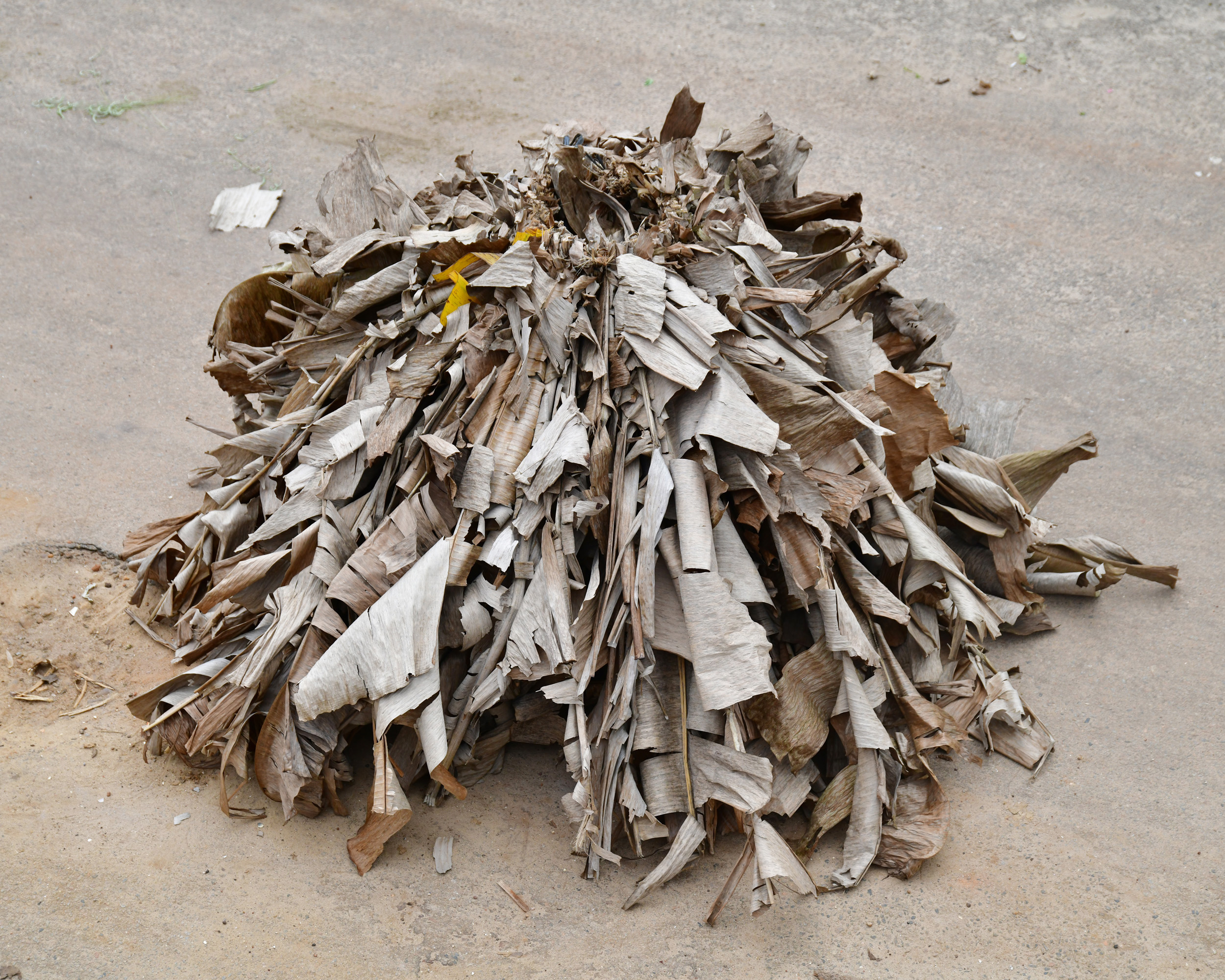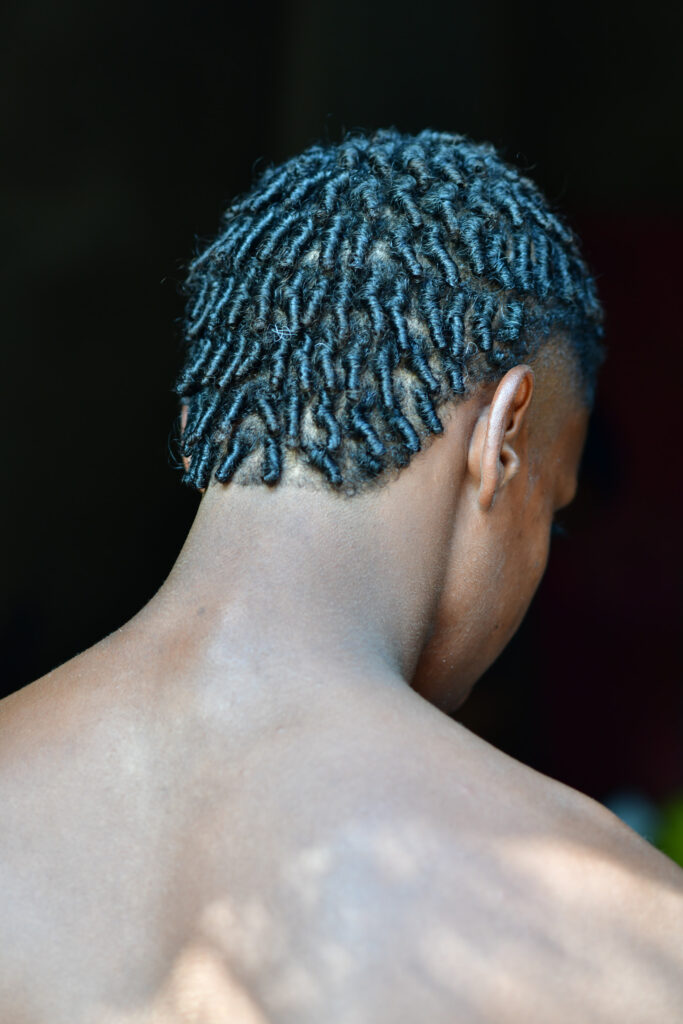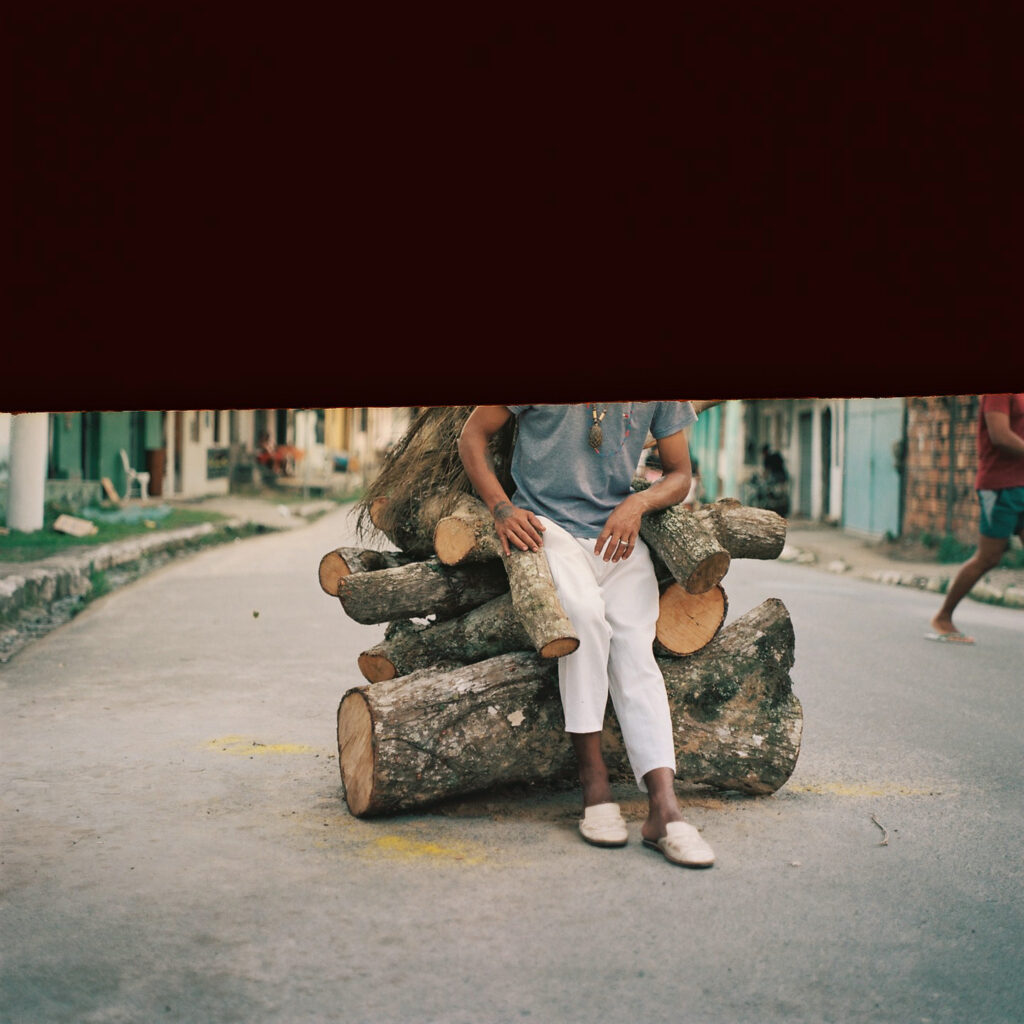
The banana tree leaves used in the Nego Fugido are symbolic elements linked as much to ancestry as they are to the violence of slavery. Nicola Lo Calzo, City of Acupe. 2022. Nego Fugido series.
EVENTS
THURSDAY JUNE 5 | 2pm
NICOLA LO CALZO’S THESIS DEFENSE
Queer and Maroon photography
Representing memories of slavery in the Postcolony
at the Centre d’art Ygrec – ENSAPC reservation required
THURSDAY JUNE 5 | 6pm – 9pm
EXHIBITION OPENING
Nego Fugido, Quilombola memories
from June 5 to July 12, 2025 at the Ygrec Art Center – ENSAPC
Curated by: Ioana Mello
THESIS DEFENSE
QUEER AND MAROON PHOTOGRAPHY
Representing memories of slavery in the Postcolony
Thursday June 5, 2025 at 2pm at the Centre d’art Ygrec – ENSAPC
under the supervision of Sylvie Brodziak (CY Cergy Paris Université) and Corinne Diserens (Hamburger Kunsthalle, ETH Zürich)
defended before a jury composed of :
Sylvie Brodziak (CY Cergy Parisi Université), Corinne Diserens (Hamburger Kunsthalle, ETH Zürich), Myriam Cottias (CNRS), Antoine Idier (Sciences Po Saint-Germain-en-Laye), Simon Njami (Sorbonne), Magali Nachtergael (Université de Bordeaux), Anne-Marie Petitjean (CY Cergy Parisi Université), Rafael Sanzio Araújo dos Anjos (Universidade de Brasília).
This thesis articulates two complementary dimensions of research in art: a photography practice developed around memories of resistance to slavery, and more specifically around the memory of the Nego Fugido in the Acupe community in Brazil (Bahia); as well as a theoretical reflection on the motivations of “queer and maroon photography.” The work is imagined as a way of “seeing from below” as much as “askew”. This work thus questions photography’s ability to restore subaltern memories and deconstruct hegemonic imaginaries, crossing a esthetics, ethics and critical thinking.
Places limited, by reservation only >> make a reservation
Ashes and fire
Nicola Lo Calzo’s exhibition, Nego Fugido, Quilombola memories, offers a sensitive and committed immersion into a process of reaffirming freedom.
Every year, in the Quilombola community [1] of Acupe, Brazil, the Nego Fugido takes place: a ritual performance that re-enacts the dehumanization of slavery and the struggle of enslaved subjects for emancipation. Like tableaux vivants, this mise en scène brings to life an embodied memory of oppression and resistance from the point of view of those who had been subjugated.
Contrary to the dominant narratives, Nego Fugido constructs a sovereign counter-narrative, which is carried by those whose history has long been denied or erased. Through this practice, the community reappropriates its past, revisits it in the light of the present, and proposes a more complex reading of its colonial heritage, which is still alive in Brazil as it is elsewhere. The performance of Nego Fugido thus acts as an act of memorial mediation, at the crossroads of art, politics, spirituality and transmission. And collectively asks us: What voices shape our historical memory? Who decides which narratives form the basis of a nation?Through exhibiting this practice, the artist-researcher Nicola Lo Calzo reveals an often unspoken aspect of history: a memory that is not fixed, that is not written down in books, but which is expressed through bodies, gestures, songs and rituals. This series is part of the KAM project, which was initiated in 2010. This project explores Atlantic memories of slavery and the forms of resistance that emerged from them. Lo Calzo’s approach is always one of attentive co-creation. It is far removed from any voyeuristic or exoticizing posture. His work is rooted in a relationship of listening and collaboration with the community, aimed at creating common ground.
In the exhibition, the strata of memory and spirituality take shape through a visual constellation: photographs, videos, sound recordings, archives and symbolic objects interact to convey the depth of this practice. Exu is a complex figure in Afro-Brazilian cults and drives the central theme of the exhibition. This deity is a unifying element that the public follows throughout the exhibition. Exu is associated with the Nego Fugido and presents himself as a personification of defiance, as well as an intermediary between gods and men.
Nego Fugido is a space for reinventing the past, it is an act of self-determination in the face of the paternalistic discourses of so-called racial democracy or the stereotypical representations conveyed through a façade of multiculturalism. By way of images and installations, this exhibition invites us to take a fresh look at the history of slavery and its contemporary resonances. As part of the Brazil – France 2025 Season, we want to deepen the dialogue between these two cultures and help build a collective memory that is plural, living and deeply rooted in the realities of the communities that bear it.
Ioana Mello, exhibition curator
[1] A quilombo refers to a community formed by escaped slaves in remote regions, such as the Amazon rainforest or the sertão.

Zoio, member of the Nego Fugido. Nicola Lo Calzo, City of Acupe, Bahia, 2022. Nego Fugido series.
This exhibition, in collaboration with Associação Cultural Nego Fugido, is the result of research carried out between 2022 and 2025 as part of Nicola Lo Calzo’s doctorate at the Humanities, Creation and Heritage Research School of CY Cergy Paris Université in partnership with ENSAPC (under the direction of Sylvie Brodziak and Corinne Diserens). This thesis continues a long-term photographic project on the memories and survivals of colonial slavery and its resistance in Africa, the Caribbean, the Americas and Europe, which began in 2011: the KAM project. Using a queer and intersectional approach, this project seeks to raise the central question of postcolonial representations within artistic practice, particularly when the artist operates and intervenes in contexts still marked by social inequalities and the after-effects of colonial history.
On the occasion of the Aimé Césaire Cycle organized by the City of Aubervilliers as part of the National Day of Remembrance of the Slave Trade, Slavery and their Abolition, 10 photographs by Nicola Lo Calzo will be displayed on billboards throughout Aubervilliers for the duration of the exhibition.

Mestre Douglas, Xangô Fire (Fogueira de Xangô in portuguese), Nicola Lo Calzo, Acupe, 2022. Nego Fugido series.
Nicola Lo Calzo is a photographer and teacher-researcher living in France since 2006. He currently works in Paris, where he teaches a course on anti-colonial and queer practices in photography at the École nationale supérieure d’arts de Paris-Cergy and Sciences Po Saint-Germain-en-Laye.
His works have been exhibited in Museums, Art Centers and Festivals, including the Museé Nivola in Orani (Brigantinas, 2024), the Festival Fotografia Europea in Reggio Emilia and the Centro Italiano di Fotografia in Turin (Binidittu, 2021), the Institut des Cultures Islam in Paris (Tchamba, 2020), the Centro de la Imagen in Mexico City (Obia, 2018), the Hospice Comtesse in Lille (Regla, 2018), the Musée d’Art Contemporain Africain Al Maaden in Marrakech (Agouda, 2017). In 2017, his work was exhibited as part of the Afriques Capitales exhibition organized by Simon Njami between Paris and Lille. Lo Calzo’s works can be found in several private and public collections, including the national collections of the CNAP, the BNF, the Lightwork collection in Syracuse – New York, the Alinari Archives in Florence, the Pinacoteca Civica in Monza and the Tropenmuseum in Amsterdam. Lo Calzo is a CNAP laureate in 2018, nominated for the Prix Elysée in 2019 and a finalist for the Prix Nièpce in 2020. In 2022, he is the winner of the BNF’s Grande Commande Photographique. His work has been published by Editions Kehrer (Regla in 2017, Obia in 2015 and Inside Niger in 2012 and L’Artiere (Benidittu in 2020). He is also a regular contributor to the international press, including Le Monde (daily and magazine), The Guardian, Internazionale. His work is represented by Galerie Dominique Fiat (France) and Galerie Podbielski Contemporary (Italy).
This traveling exhibition is organized as part of the Brazil – France 2025 Season. It will be presented in three institutions in Brazil: the Alliance Française de Brasília, the FotoRio festival, and the Afro-Brazilian Museum (MAFRO) in Bahia. It is also supported by the Fondation pour la mémoire de l’esclavage and the AFD, as well as by the City of Aubervilliers.












